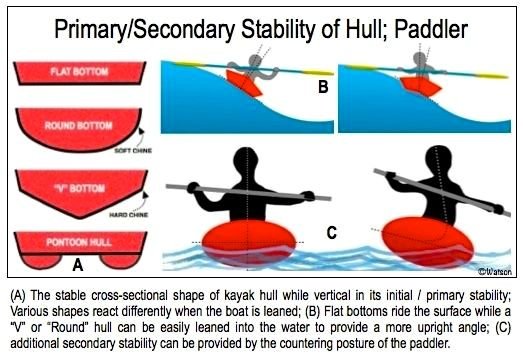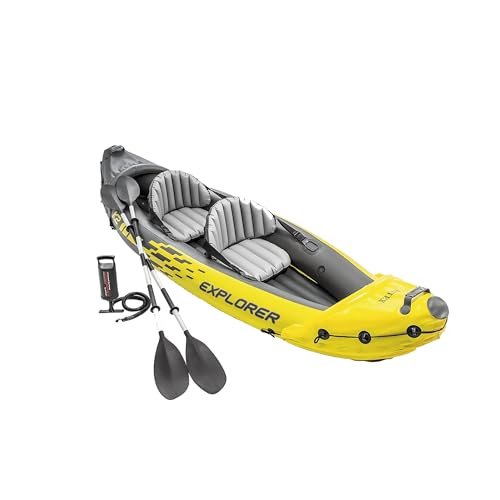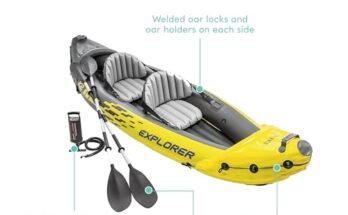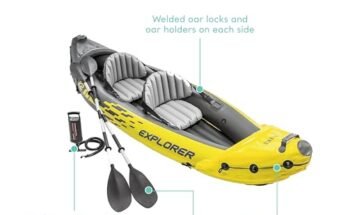Do you want to glide faster across the water and make every paddle stroke count? Improving your kayak speed isn’t just about raw power—it’s about technique, equipment, and smart habits.
Whether you’re racing, exploring, or just want to get from point A to B more quickly, this guide will give you practical tips you can start using right now. Ready to boost your speed and enjoy every moment on your kayak?
Let’s dive in and transform how you paddle.
Optimize Paddle Technique
Improving kayak speed starts with better paddle technique. Small changes in how you paddle can make a big difference.
Focus on how you stroke, how fast you paddle, and how you use your body. These tips help you move faster and save energy.
Perfect Your Stroke
Use a smooth and controlled paddle stroke. Enter the water near your feet and pull straight back along the kayak’s side.
- Keep your top hand steady and close to the kayak.
- Use your torso to drive the paddle, not just your arms.
- Finish each stroke near your hip for full power.
Increase Stroke Rate
A faster stroke rate boosts kayak speed. Find a rhythm you can keep without tiring quickly.
| Stroke Rate | Effect |
| Low (20-30 strokes/min) | Less speed, more endurance |
| Medium (30-40 strokes/min) | Balanced speed and energy use |
| High (40+ strokes/min) | Maximum speed, high energy use |
Engage Core Muscles
Strong core muscles help you paddle with more power and control. Use your abs and back during each stroke.
Try this core engagement checklist:
- Sit tall with a straight back
- Twist your torso as you paddle
- Keep your hips stable and strong
- Use leg pressure to support your stroke

Choose The Right Kayak
Choosing the right kayak is important to improve your speed on the water. The right kayak helps you paddle faster and use less energy.
This guide will help you pick a kayak that fits your needs and water conditions. Focus on kayak type, size, and materials.
Match Kayak Type To Water Conditions
Different kayaks work best in different water. Choose a kayak type that matches where you will paddle most.
For calm lakes, a recreational kayak is stable and easy to use. For rivers and rough water, consider a whitewater kayak. Sea kayaks work well for open water and long trips.
- Recreational kayaks: best for calm water and beginners
- Whitewater kayaks: designed for fast-moving rivers
- Sea kayaks: built for speed and long distances on open water
Consider Kayak Length And Width
Length and width affect how fast your kayak moves. Longer kayaks glide better and hold speed well.
Narrow kayaks cut through water easier but can be less stable. Wider kayaks offer more balance but may paddle slower.
- Long kayaks (12-18 feet): better speed and tracking
- Short kayaks (under 12 feet): easier to turn but slower
- Narrow width (less than 28 inches): faster but less stable
- Wide width (over 28 inches): more stable but slower
Select Lightweight Materials
Lighter kayaks are easier to paddle faster. Choose kayaks made from lightweight materials for better speed.
Common materials include plastic, fiberglass, and carbon fiber. Carbon fiber is the lightest but more expensive. Plastic is heavier but durable.
- Polyethylene plastic: durable and affordable, but heavy
- Fiberglass: lighter and faster than plastic
- Carbon fiber: very light and fast, costs more
Improve Body Positioning
Body positioning is key to paddling faster in your kayak. Small changes help you move through water with less effort.
Good posture reduces drag and improves your paddle power. Focus on how your body sits and moves in the kayak.
Maintain Low Center Of Gravity
Keep your body low and close to the kayak’s bottom. A low center of gravity helps balance and control.
Sitting too high makes the kayak unstable. This slows you down and wastes energy. Stay relaxed but firm.
- Keep your hips low and tight inside the kayak
- Avoid slouching or leaning too far back
- Use your core muscles to stay steady
Streamline Your Profile
Reduce wind and water resistance by making your body as narrow as possible. This lets you glide faster.
Keep your arms close to your sides and your head low. Avoid wide movements that create drag in the water.
- Lean forward slightly to reduce wind catch
- Keep elbows tight during each paddle stroke
- Look down or forward, not upward
Adjust Seating For Comfort
A well-adjusted seat helps you paddle longer and stronger. Comfort improves your body position and speed.
Check that your seat supports your lower back and lets you reach the foot braces easily. Adjust before you start paddling.
- Move seat forward or backward for proper leg reach
- Use padding if the seat is too hard
- Adjust seat height to keep hips low

Enhance Physical Fitness
Improving your kayak speed needs good physical fitness. It helps you paddle harder and longer. Focus on three key areas to boost your performance.
Building strength, endurance, and flexibility makes paddling easier. These fitness tips can help you go faster on the water.
Build Upper Body Strength
Strong arms, shoulders, and back muscles improve your paddle stroke. Use resistance training to build this strength. Exercises like push-ups, pull-ups, and rowing are good choices.
- Do push-ups to strengthen your chest and arms.
- Use resistance bands for shoulder workouts.
- Practice pull-ups to build back muscles.
- Try rowing machines to mimic paddling motion.
Increase Cardiovascular Endurance
Cardio fitness helps you paddle longer without getting tired. Running, cycling, and swimming are good for heart and lung health. Try to exercise at least three times a week.
| Activity | Duration | Frequency |
| Running | 20-30 minutes | 3 times a week |
| Cycling | 30-45 minutes | 3 times a week |
| Swimming | 20-30 minutes | 2-3 times a week |
Incorporate Flexibility Training
Flexibility helps you reach better paddle angles and avoid injuries. Stretch your shoulders, back, and arms regularly. Yoga and dynamic stretches work well.
- Stretch shoulders with arm circles and cross-body pulls.
- Do back stretches like cat-cow and child’s pose.
- Use dynamic stretches before paddling to warm up.
- Practice yoga poses that open the chest and hips.
Use Efficient Equipment
Improving kayak speed often depends on the equipment you use. Choosing the right gear helps you paddle faster and easier.
Efficient equipment reduces water resistance and increases your power output. This guide focuses on key gear choices that help boost your speed.
Select High-performance Paddles
Good paddles make a big difference in kayak speed. Lightweight paddles reduce arm fatigue and allow quicker strokes.
Look for paddles with a narrow blade shape to cut through the water easily. Carbon fiber paddles are strong and light.
- Choose paddle length based on your height and kayak width
- Select blades designed for fast, smooth strokes
- Use paddle materials like carbon or fiberglass for lightness
Maintain Kayak Hull
A clean and smooth kayak hull moves faster in the water. Dirt and scratches increase drag and slow you down.
Regular cleaning and waxing keep the hull slick. Fix any cracks or dents to maintain good water flow under your kayak.
- Wash the hull after every use to remove dirt and algae
- Apply marine wax for a smooth finish
- Inspect for damage and repair promptly
Add Speed-boosting Accessories
Certain accessories can help you paddle faster by improving stability and reducing drag. Choose items designed for speed.
Examples include skegs or rudders that improve tracking and spray skirts that keep water out of the kayak.
- Install a skeg or rudder for better direction control
- Use a spray skirt to keep water off your legs and inside space dry
- Choose lightweight gear to avoid extra weight
Master Water Reading
Understanding water dynamics can boost your kayak speed. Mastering this skill helps you navigate efficiently.
Learn to read the water to make quick decisions. This knowledge allows you to avoid obstacles and use currents to your advantage.
Identify Currents And Tides
Currents and tides impact your speed on the water. Knowing how to identify them is essential for effective kayaking.
- Observe water surface for patterns
- Check tide charts before heading out
- Look for changes in water color
Plan Optimal Routes
Planning your route can save time and energy. Use maps and apps to identify the best paths through water.
| Route Type | Benefits |
| Direct Route | Faster travel time |
| Scenic Route | Enjoy nature views |
| Protected Route | Less wind resistance |
Adapt To Weather Changes
Weather can change quickly on the water. Being prepared helps you maintain speed and safety.
Practice Regularly
Regular practice is key to improving kayak speed. Consistent training helps build strength and technique.
With regular sessions, you become more comfortable on the water. This leads to faster paddling over time.
Set Training Goals
Setting clear goals gives direction to your practice. Goals should be specific and achievable.
Start with small targets and gradually increase them. This keeps you motivated and focused.
- Improve paddle stroke efficiency
- Increase paddling distance weekly
- Enhance overall endurance
Track Progress
Tracking progress helps you see improvements over time. Use a journal or an app to log details.
Record your speed, distance, and time regularly. This data helps you adjust your training plan.
| Week | Distance (km) | Average Speed (km/h) |
| 1 | 5 | 4 |
| 2 | 7 | 4.5 |
| 3 | 10 | 5 |
Join Kayaking Communities
Being part of a community makes practice more enjoyable. You can learn from others and share tips.
Communities offer support and motivation. They organize events and group training sessions.
- Participate in local kayaking clubs
- Join online forums and groups
- Attend kayaking meet-ups

Frequently Asked Questions
How Can I Increase My Kayak Speed Effectively?
To increase kayak speed, focus on improving your paddling technique, using efficient strokes, and maintaining a steady rhythm. Also, trim excess weight and choose a sleek kayak design for better water flow.
What Is The Best Paddling Technique For Speed?
The best technique is the forward stroke with a high-angle paddle. Engage your core muscles, keep your torso rotating, and minimize arm fatigue to maximize power and speed.
Does Kayak Design Impact Speed?
Yes, kayak design greatly affects speed. Narrow, longer kayaks with a pointed bow cut through water faster. Wider kayaks offer stability but reduce speed.
How Does Weight Affect Kayak Speed?
Heavier kayaks or added gear create more drag and slow you down. Lighten your load and distribute weight evenly to improve speed and balance.
Conclusion
Improving kayak speed takes practice and the right techniques. Focus on your paddle stroke and body position. Keep your kayak balanced and reduce drag. Regular training helps build strength and endurance. Small changes can lead to faster paddling. Enjoy the water and stay patient.
Speed will come with time and effort. Keep exploring new ways to improve your skills. Every trip can be better than the last. Stay safe and have fun on the water.



